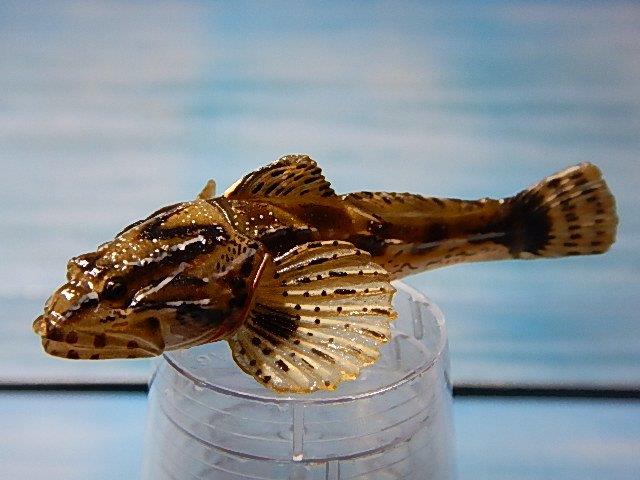
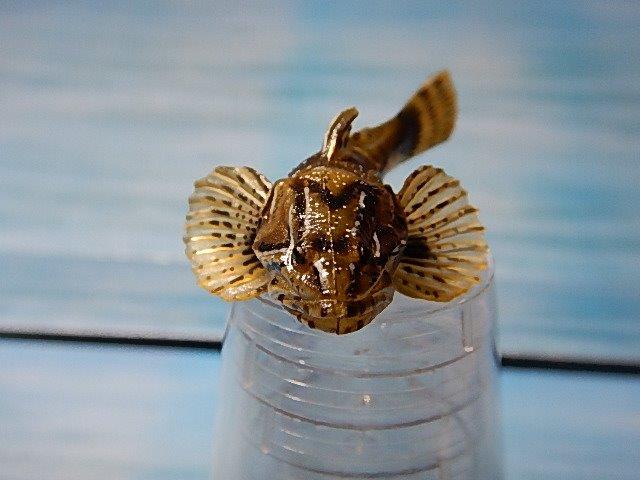
This figure is the Roughskin Sculpin (for reasons that are unclear, the Japanese name Yamanokami apparently translates to “God of the Mountain!”), Trachidermus fasciatus, sculpt number 27 and number 12 from the second series. This is the first and only sculpin (Cottidae) in the Yujin series. They are medium-sized fish, inhabiting river bottoms and preying on fish and invertebrates. They are native to coastal waters and rivers in China, Korea and Japan. Like many of the freshwater fish we’ve seen, the Roughskin Sculpin is catadromous, spawning in river delta mudflats and then swimming upstream to grow into adults; they nest in any structures they can find, including garbage like glass bottles, where males often guard the nests.
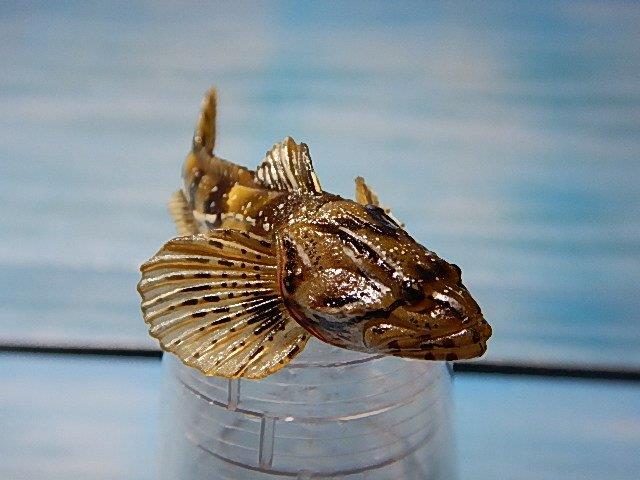
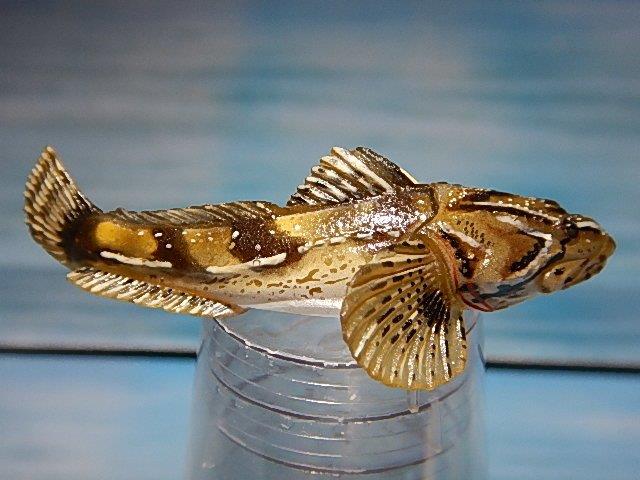
Apparently, habitat degradation has negatively affected Roughskin Sculpin populations, but I found conflicting info on whether or not they have an official status designation; currently the IUCN lists them as Not Evaluated. Apparently, they have been considered a luxury food item, but not commonly eaten. The Yujin model gives a length of 16cm, which is about on average given the range I found of anything from 14cm to 20cm.
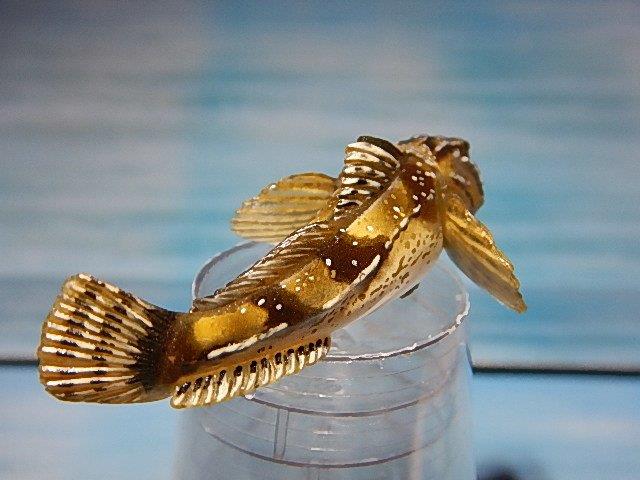
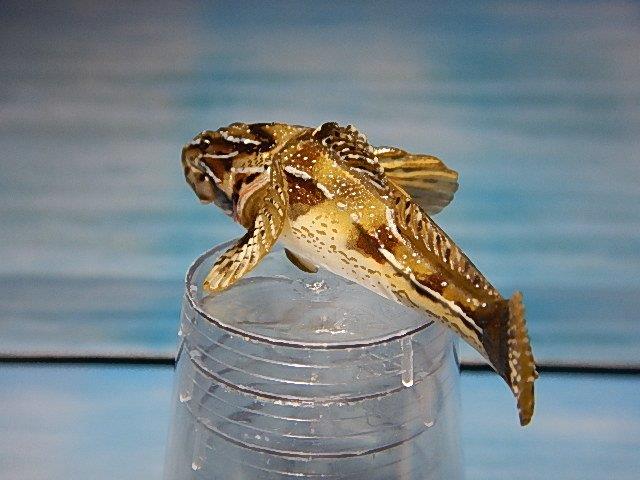
This model measures 6.5cm long, giving a scale of 1:2 (the scale factor is close to 2.5, but rounding! does things). The figure is another very complicated pattern. The fish is painted to be very shiny, representing the lack of scales of these fish. It is coloured light brown with dark brown markings across the body in an irregular pattern of spots, blotches and bars. The ventral surface is plain white, with some scattered light brown spots along the lateral margins. The fins are a translucent yellow with thick fin rays. The fins are covered with small, scattered dark and light brown blotches. The pectoral fins are especially large, as is expected in sculpins.
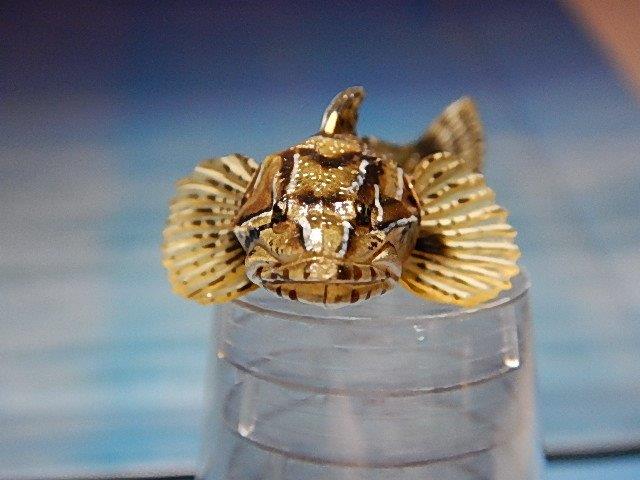
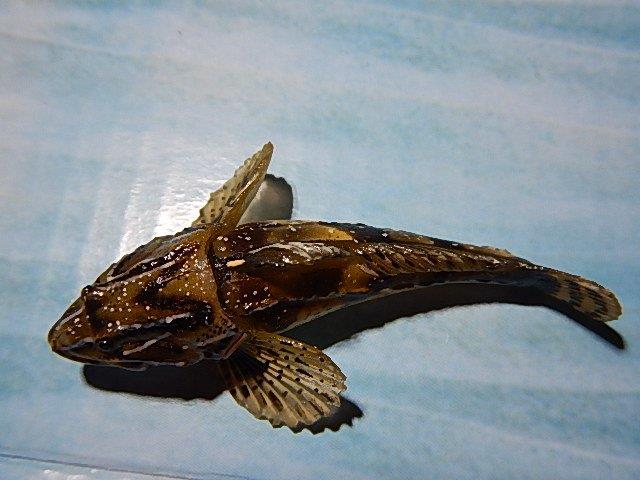
The head is sculpted with a lot of detail, featuring the ridges and knobs common to sculpins. This is another figure that is made in two pieces, separating the head + pectoral fins from the rest of the body. There is just a hint of red around the opercula, although the paint is kind of sloppy. This is also the first of the Yujin fish to be made without any base at all—perhaps, given the bottom-dwelling habits, they decided not to bother giving it a ‘swimming’ behaviour; most of the last figures in the series do not have bases, and all of these are bottom dwellers.
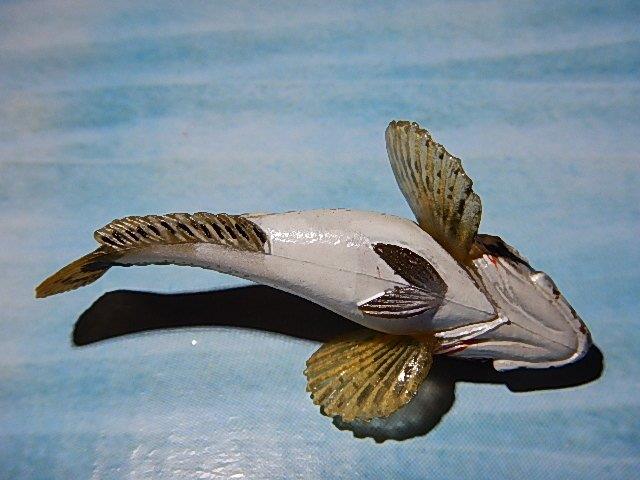
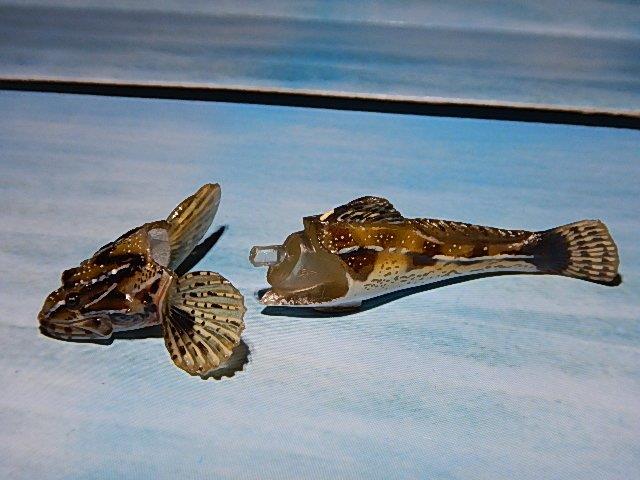
Most sculpin figures that I am aware of are made in Japan (despite being found around the world), representing a few different Japanese species (I have 3 Japanese sculpin figures, of 3 different species). The companies include Kaiyodo, Colorata and Kitan, plus probably a few others (any fish referred to as a ‘god’ is likely to be made as a few figures!).
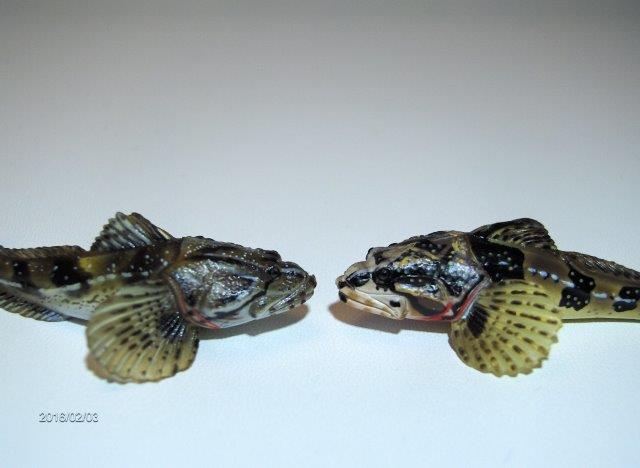
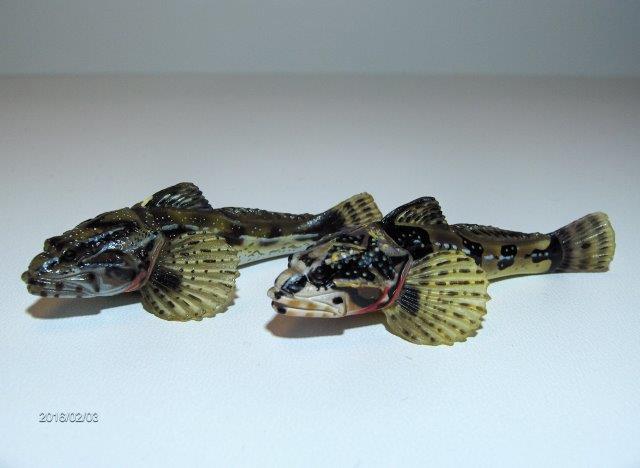
This is also another of the figures where, eventually, I ended up with a version from both the First and Second releases. The model I received first, and described above, was the second release. The Release 1 model (pictured below, on the right in the pictures) is more bluntly painted, with less subtle washes and a lighter olive body. Most notably, there is a lot more white on the mouth–but less white on the ventrum! Overall, though, it’s not too bad, and still quite suitable considering how variable sculpins can be.
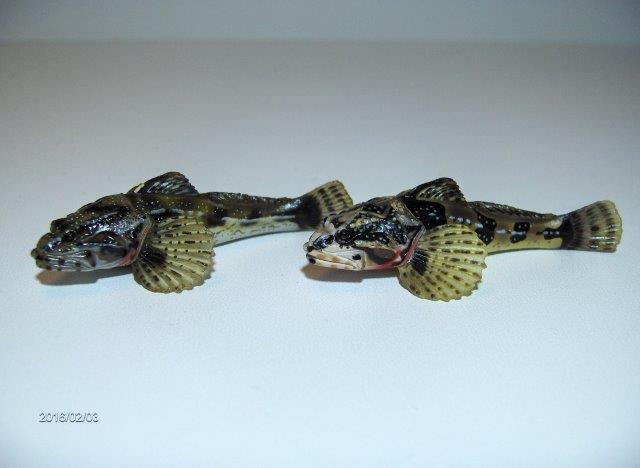
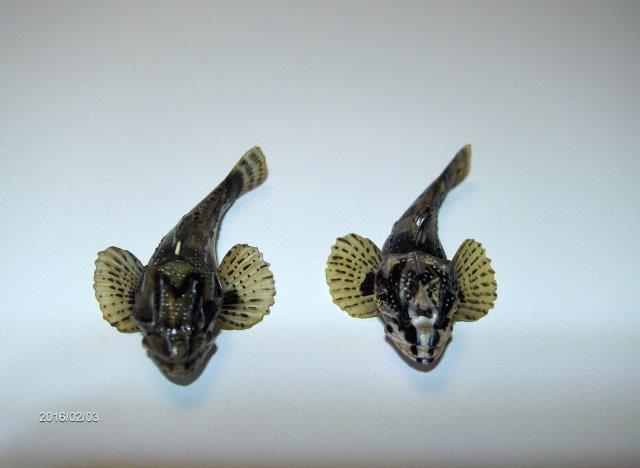
Starting on the 14th of January, 2024, I migrated my first Yujin Freshwater Fish Pictorial walkaround post from the Animal Toy Forum to this blog, with the intention of moving all species’/figures’ walkarounds here. The initial post contained a lengthy explanation of the series (both the original and updated) that I don’t think should be repeated each time! For those details, the post can be seen at the first post. Then we can just get to the fish. Most of the details and writing will come from the original post, although I may supplement/add where appropriate.
From the Forum:
- Jetoar: Woooow
 it is really awesome.
it is really awesome. - brontodocus: Great and realistic colour pattern on this sculpin figure!

- stargatedalek: Really beautiful! It looks almost identical to the sculpin we get here, although it seems their breeding habits are very different since you won’t find ours in fresh water.
- sbell: See, we have some here in Alberta, strictly freshwater, but they are far more…lumpy…looking.
Disclaimer: links to Ebay and Amazon on the AnimalToyBlog are affiliate links, so we make a small commission if you use them. Thanks for supporting us!



